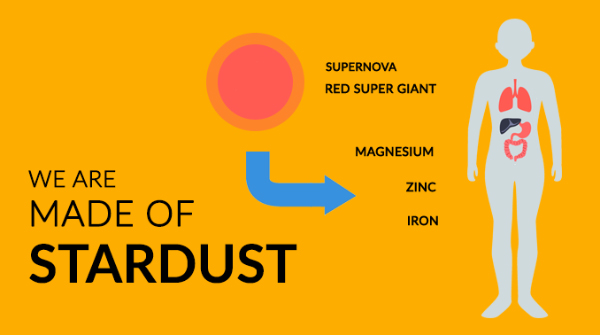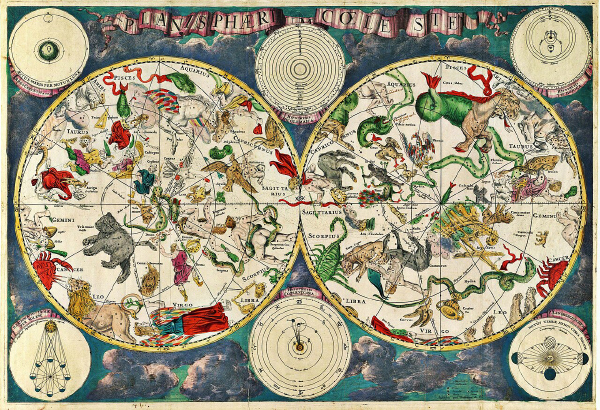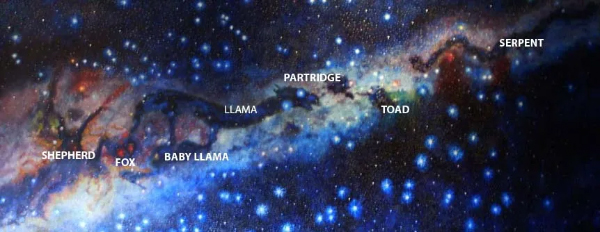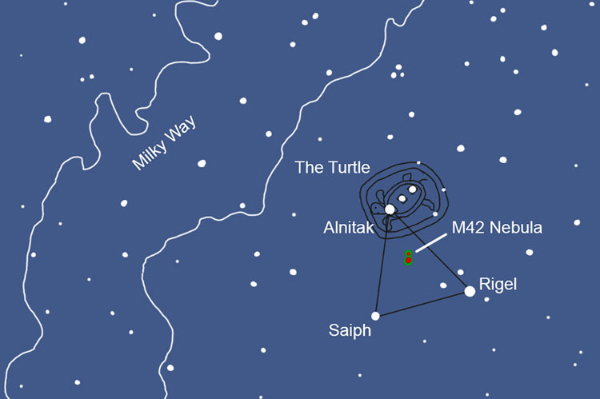Cosmic Curiosities
“We're on our own on spaceship Earth. So, we have to solve our own problems.”
- Sandra Faber, American Astronomer
Supernova Update
Artist's Animation of a Supernova Explosion; credit: European Space Agency
Astronomers recently released a new animation of Supernova (SN) 2024ggi. The blast revealed the shape of the explosion at its earliest stage. Unexpectedly, it was shaped like an olive! As the explosion spread outwards and collided with the matter around the star, the shape flattened out. This stellar debris data was quickly captured only 26 hours after detonation. Telescopes locked onto it and allowed astronomers to observe its earliest moments and geometry in unprecedented detail. These fast and direct measurements give us clues about the supernova's shape. Two objects being studied are how neutrinos (tiny invisible, subatomic particles) and magnetic fields might work together to shape the explosion.
The original star was a red supergiant about 12-15 times the mass of our sun. If you placed this star where our sun is, the Earth would be located inside the star. It was a Type II supernova—a giant star that runs through its fuel quickly (millions of years) and builds up a severely packed iron core. Unable to fuse this dense iron into more energy, the star collapses and rebounds off the core in a titanic blast. It was discovered on April 11, 2024.

SN 2024ggi is located inside the galaxy NGC 3621 in the constellation Hydra. Its distance is only 22 million light-years away, close by in astronomical terms.
REMINDERS FOR US
All supernovae are more than spectacular cosmic fireworks. They are a profound reminder of how deeply entwined we are with the stars, how they have shaped our own existence and our place in the universe.
SN 2024ggi is a vivid illustration of how massive stars live and die, and how their death throes scatter heavy elements across the galaxy. Those elements eventually become part of new stars, planets, and even living beings.

Credit: Earth Now
Stellar explosions create many of the elements essential for life. When a massive star dies in a supernova, the immense heat and pressure forge heavy elements like magnesium, zinc, and iron. Many stars that do not explode produce carbon and oxygen in their intensely hot cores. These atoms are found throughout our bodies, bones, and blood.
Supernovae also influence the structure and evolution of stars throughout the billions of galaxies. They help trigger new generations of stars. The cosmic rays (high-energy particles) generated by supernovae may have shaped Earth's atmosphere and biological evolution.
In a very real sense, every human being is made from the ashes of ancient stars. Supernovae are not distant cosmic events—they are part of our origin story.
The gold and silver found in much of our jewelry is also produced shortly after a supernova.
Southern Star Lore
Ancient constellations from stargazers south of the equator are not well known, unfortunately. It is time to shed some light on these rich and imaginative stories.
WHERE DID OUR OFFICIAL 88-CONSTELLATION MAP COME FROM?

A celestial map from the Golden Age of Netherlandish cartography, by the Dutch cartographer Frederik de Wit
In 150 AD, Ptolemy identified 48 constellations in the Almagest, the oldest star catalogue available to scientists with complete tables of coordinates and magnitudes. Most of these came from ancient sky watchers from the Babylonian and Greek cultures. The 40 other constellations came from other Europeans. Their ships explored the unknown southern lands from the 1590s to the 1750s. The southern sky was also unknown to these explorers—so many new constellations were created on these journeys.
By 1928, the International Astronomical Union (IAU) formally accepted 88 constellations across both hemispheres, excluding and ignoring indigenous traditions which had existed for millennia.
A SELECTION OF SOUTHERN STAR STORIES

Australian Aboriginal Emu “constellation” overlaying the Milky Way, with matching petroglyph; credit: Barnaby & Ray Norris
Aboriginal Australians and Torres Strait Islanders are sometimes referred to as the earliest astronomers, as their stargazing traditions go back more than 65,000 years. While Western traditions typically focus on the individual specs of light, these stargazers realized the dark spaces were just as important. The dark parts of the Milky Way were now the outline of an emu, an animal of immense spiritual significance.
The Torres Strait tradition saw the Pleaides star cluster as an angry fisherman who killed the 12 men of his crew, placing them in those stars (Robinson, 2013). After, he also went into the sky, his left hand becoming the Southern Cross (Crux) and his right hand in a part of Corvus, standing on his canoe made of Scorpius.

Sotho-Tswana sky with modern constellations/names for comparison; credit: Science First/STARLAB
The stargazing traditions in the southern half of Africa should also be recognized. Near Crux, in the constellation Centaurus, the two bright stars Alpha and Beta Centaur. The Sotho-Tswana people see the stars of the Southern Cross and the two Pointer stars (Alpha and Beta Centauri) as a group of giraffes.
In comparison, the San people (also Saan), or Bushmen, saw a lion in the stars instead of the Southern Cross, a belief stemming from their spiritual connection to lions and the night sky. The related Khoikhoi group said they were the eyes of a great celestial beast.
Many communities focused on Orion's belt stars in their stories, identifying them as three animals, though the Masai people saw them as "three old men pursed by lonesome widows." Sirius was also recognized as the brightest star in the sky, and the Xhosa fittingly refer to it as iQhawe, or “the champion” star.

Inca dark constellations in the Milky Way; credit: Dolan 2019
In South America, the Inca and Maya were particularly skilled skywatchers. Both civilizations built observatories to analyze the patterns of heavenly bodies. The Temple of the Sun at Machu Picchu and El Caracol at Chichen Itza are two of the better known.
The Inca also interpreted both the stars and the darkest patches of the sky. They imagined the Milky Way as a cosmic river, and the dark splotches were living animals drinking from it. Other stars foretold the coming of seasons, with the Pleiades known as the “seed sower.” It signaled when the Inca planted potatoes.
The bright stars of Orion were significant to both cultures. The belt represents a chakana, or meeting point, between heaven and Earth, to the Incas. To the Maya people, parts of Orion were seen as the hearthstones of creation that a turtle carries on its back.

Hearthstones of creation & Turtle; Credit: Reed 2024
The sky was not a dark, static thing to the peoples of the Southern Hemisphere; it was a living, spiritually significant part of their daily lives. Just like the Greeks, the stars recorded their stories and oral histories and mirrored their personal environments. The diversity in their traditions demonstrates that there is not one way to look at the sky, and that the human experience of the stars is limitless and multifaceted!
Spiral Mystery
At a recent Planetarium program, an inquisitive visitor asked, “How do we know the galaxy is a spiral?” It was a good question. When we look up on a dark, moonless night far from city lights, all we notice is a nebulous river of stars making a hazy silvery band across the sky.

Credit: Caroline Herschel
In 1785, William Herschel made the first map of the stars in the sky. He counted all the stars in all the different directions. His drawing looks like a big splat. However, Herschel had revealed how the stars are distributed across the sky.
Another advance came in 1910 when Harlow Shapley studied the distribution of globular star clusters. He found they formed a spherical halo centered not on the sun, but on a distant point in the direction of the constellation Sagittarius. This indicated the Milky Way was a large, disk-shaped structure with the sun far from the center.

Edwin Hubble & picture of the Andromeda Galaxy; credit: NASA Science
The next jump was the work of Edwin Hubble in 1923. Thanks to the powerful 100-inch telescope at the Mount Wilson Observatory, and his careful observations of faint Cepheid variable stars, Hubble turned the Andromeda Nebula into the Andromeda Galaxy! It was previously known as a spiral nebula because it had a central hub and two large spiraling arms.
Our galaxy is a duty place. Many dark nebulae obscure visible light. This prevented astronomers from getting accurate results of our galaxy's shape. So, astronomers turned to other wavelengths. A crucial tool was the development of radio astronomy in the 1950s. This allowed the detection of a 21-centimeter radiowave emitted by neutral hydrogen gas. This radiation penetrates dust, enabling the mapping of hydrogen distribution across the entire galaxy. This compressed gas provides raw material for new stars and is more concentrated in the spiral arm structures we know today.
Credit: ESO/L. Calçada
Once we finally could measure the rotational motion of stars in our galaxy, we plainly saw the Milky Way's spiral shape. This led to the discovery of dark matter. Like distant Pluto taking much longer (247 years) to orbit the sun than nearby Mercury (88 days), it was thought distant stars would take longer to orbit the galactic center. It was astronomer Vera Rubin who first observed the high and constant orbital speeds of stars throughout our galaxy. This stellar motion, no matter the distance from the center, cannot be explained by the gravity of visible matter alone. This led to the conclusion that a massive, invisible dark-matter halo must be present.
Space in Sixty Seconds
After some winter stargazing, take a trip to the southern hemisphere and see stars never visible in Wisconsin.
Sky Sights
Jupiter still shines brightly in the constellation Gemini. From December 5 to 7, watch the Moon orbit in front of the king planet and distant stars. The largest planet rises by 7 pm on December 7.
The Moon passes the bright star Spica from December 13 to 16 in the morning sky.
The Geminid meteor shower in 2026 will peak around December 13 and 14. Best times to see the shooting stars are one to three hours before sunrise on December 14 and 15. Unfortunately, a fairly bright moon will shine in the east block the faint meteors. The Geminids are unique because they originate from debris left by the asteroid 3200 Phaethon, not a comet.
Saturn will be visited by the Moon from December 24 to 27. Look up! Who knows what you might see?
Mars is still too low in the west after sunset to be seen. It returns in the morning sky in mid-February.
Venus is also lost in the sun's glare before sunrise. Venus will return to the evening sky toward the end of February 2026.
Mercury climbs high enough to see in the morning sky in early December.
December Star Map
Sign Up
Receive this newsletter via email!
Subscribe
See the Universe through a telescope
Join one of the Milwaukee-area astronomy clubs and spot craters on the Moon, the rings of Saturn, the moons of Jupiter, and much more.
Follow Bob on social media
Twitter: @MPMPlanetarium
Facebook: Daniel M. Soref Planetarium





